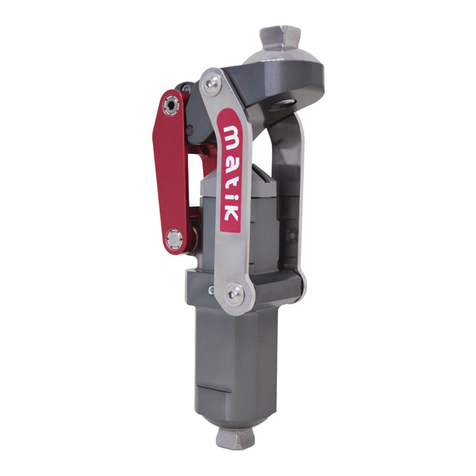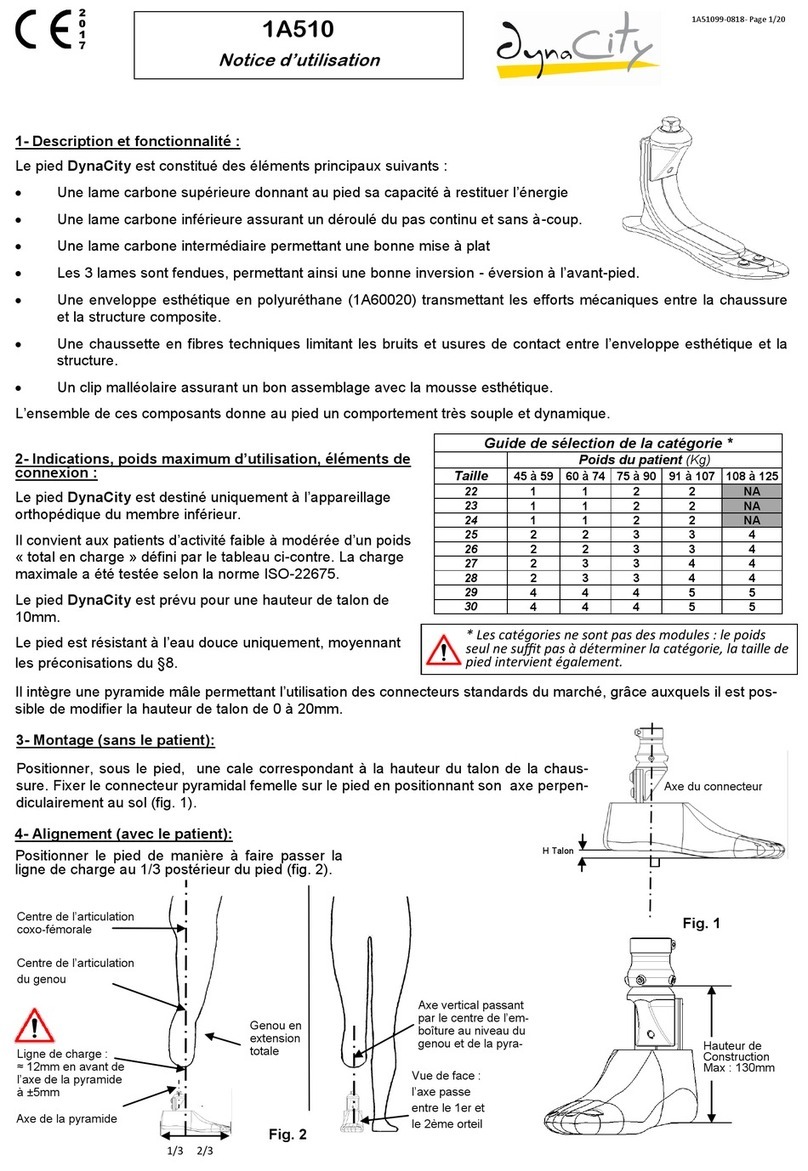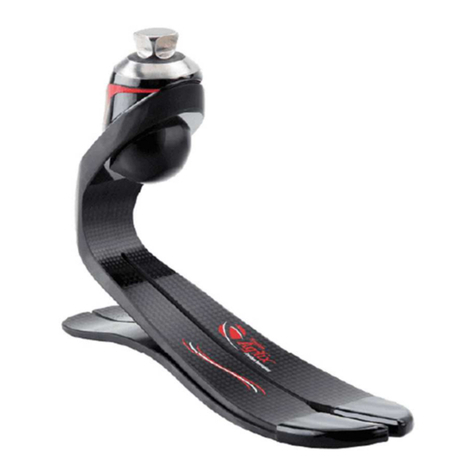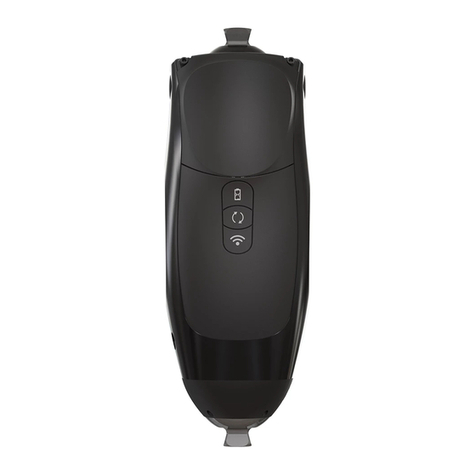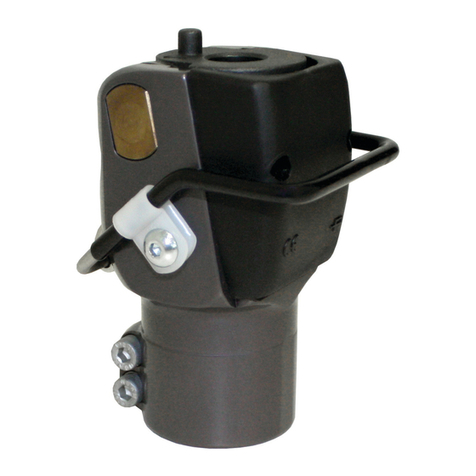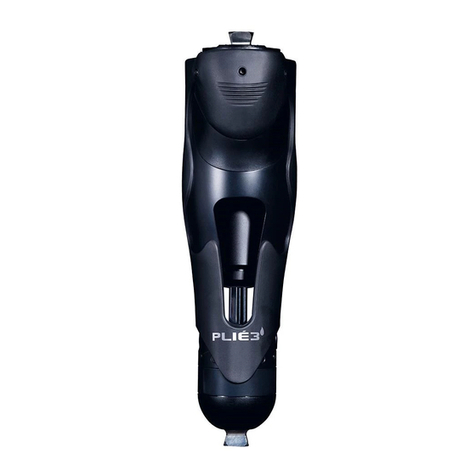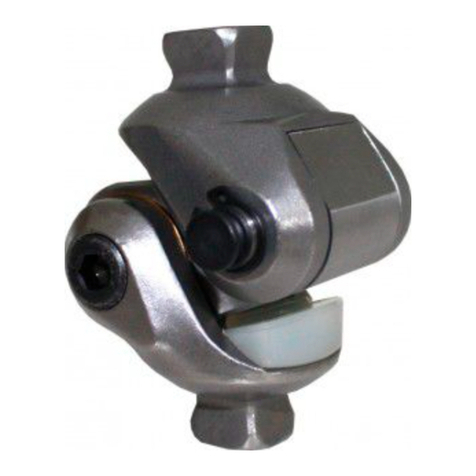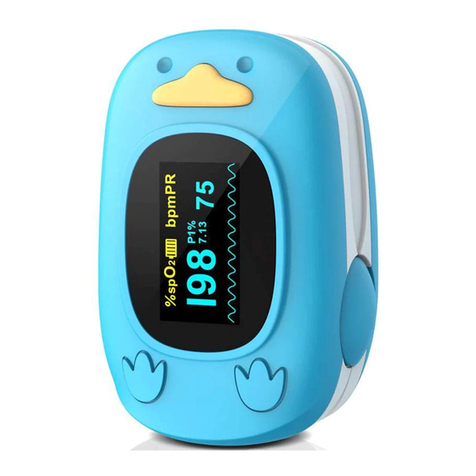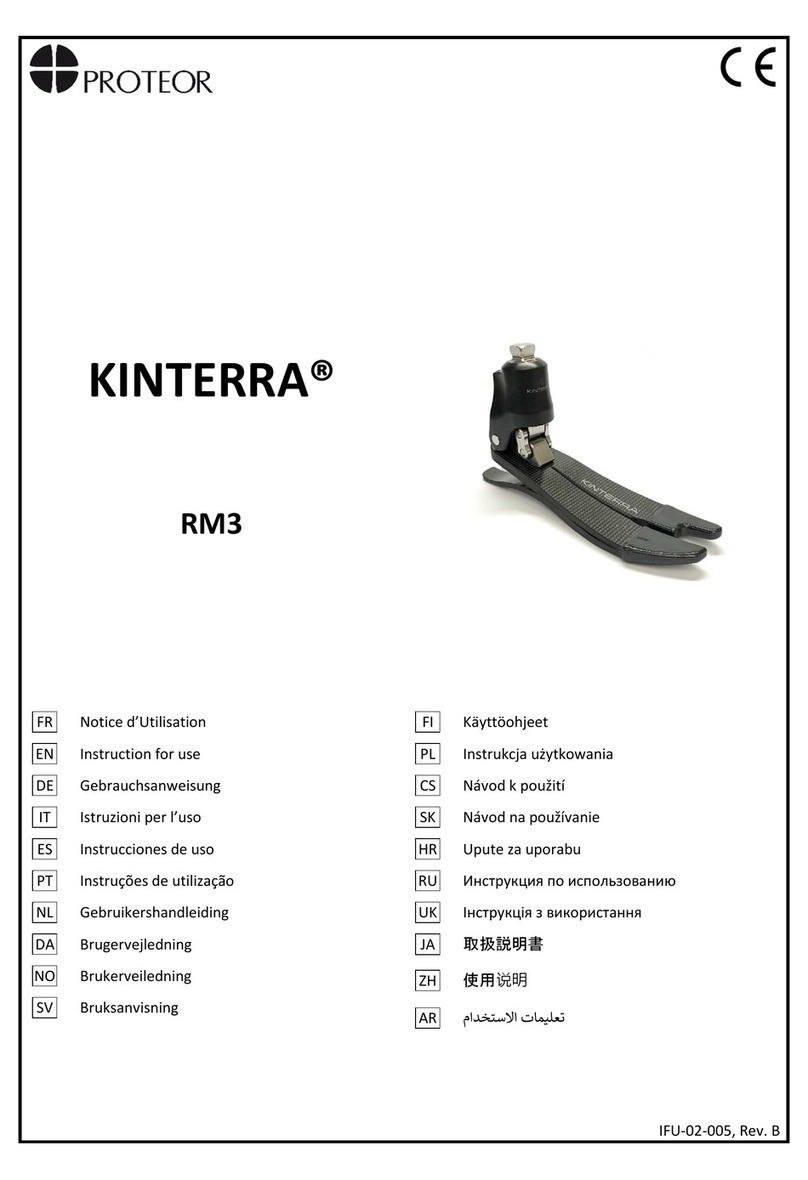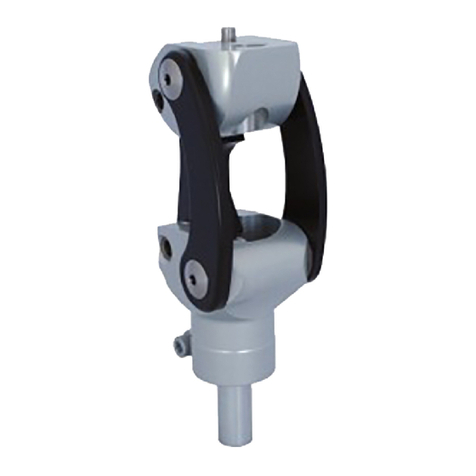
NOTICE D’UTILISATION Page 3 s r 4
IFU-01-036
so ple) po r obtenir la rigidité so haitée. Po r n placement permanent, nettoyer l’adhésif pré-appliq é avec de l’acétone et
coller les coins en tilisant de la colle cyanoacrylate.
Taille d
pied (A)
Distance dep is l’extrémité
arrière de la semelle (B)
22-25 cm 29 mm
26-28 cm 35 mm
29-31 cm 48 mm
11. DETECTION DES DYSFONCTIONNEMENTS
PROBLÈME SYMPTÔME SOLUTION
Talon trop
so ple
•Flexion plantaire trop rapide
•Sensation de raide r excessive à l’avant-pied
•Hyperextension d geno
•Décaler l’emboit re antérie rement par rapport a
pied
•Fixer n coin talonnier. Voir paragraphe 10 ci-dess s
po r les détails d’installation
Talon trop
raide
•Flexion d geno trop rapide, instabilité
•Transfert talon-avant-pied trop rapide
•Sensation de manq e de restit tion d’énergie
•Décaler l’emboit re postérie rement par rapport
a pied
•Vérifier q e la catégorie d pied est adaptée
Pied trop
raide •Interr ption dans le mo vement de déro lé d
pied à vitesse lente •Considérer n pied de catégorie inférie re
Pied trop
so ple
•Br it de clic a contact initial
•Déformation excessive de l’avant-pied lors
d’activités à fort impact
•Considérer n pied de catégorie s périe re
12. MISES EN GARDE
En cas d’emballage endommagé, vérifier l’intégrité d dispositif.
Ne jamais tiliser le pied sans enveloppe esthétiq e.
Ne jamais desserrer les vis de fixation de la pyramide.
Le patient doit informer son orthoprothésiste s’il prend o perd d poids de manière significative.
To jo rs tiliser le pied avec ne cha ssette et ne cha ss re. Le non-respect de ce conseil pe t entrainer ne défaillance
d prod it ainsi q e des bless res graves.
S’ass rer q e le pied et l’intérie r de l’enveloppe esthétiq e sont exempts d’imp retés (ex, d sable). La présence
d’imp retés pe t endommager les pièces en graphite. Nettoyer le pied en s ivant les instr ctions (voir §16).
Après ne baignade, ne tilisation dans l’ea o ne éclabo ss re par n liq ide, le pied doit être nettoyé (voir §16).
Si le patient remarq e n comportement anormal o ressent des changements dans les caractéristiq es d dispositif
(br it, je , s re excessive...), o si le dispositif a s bi n choc important, il doit cesser d’ tiliser le dispositif et cons lter
son orthoprothésiste.
Le non-respect des instr ctions d’ tilisation est dangere x et entraîne l’ann lation de la garantie.
13. CONTRE-INDICATIONS
Utilisation po r n patient dont le poids maximal (port de charge incl s) pe t dépasser 166 kg
Utilisation po r des activités associées à n risq e d’impact important o de s rcharge excessive
